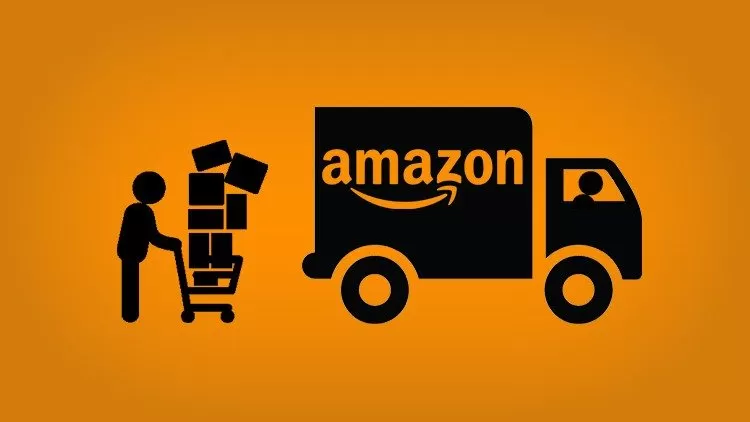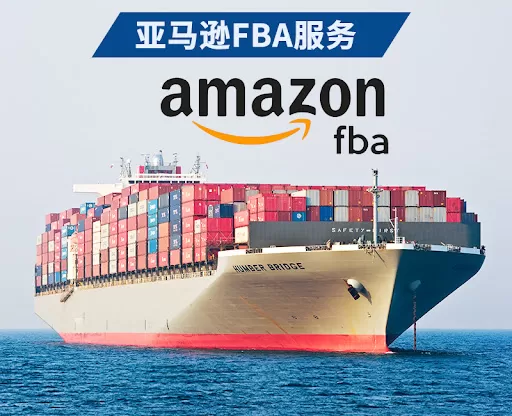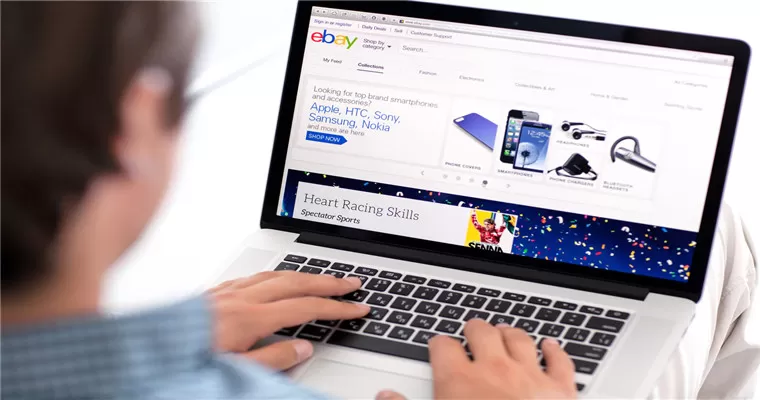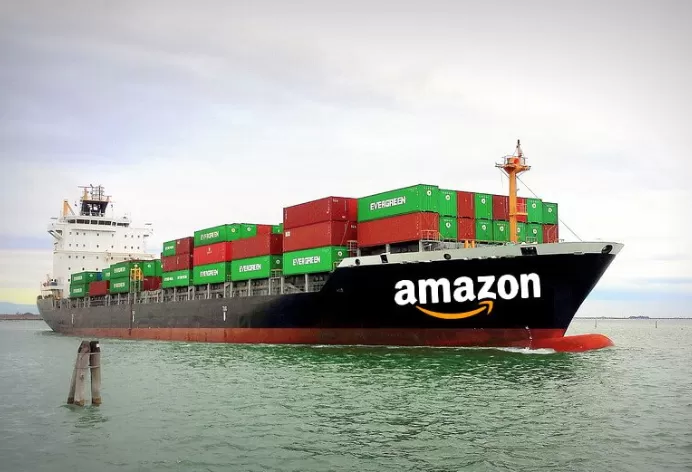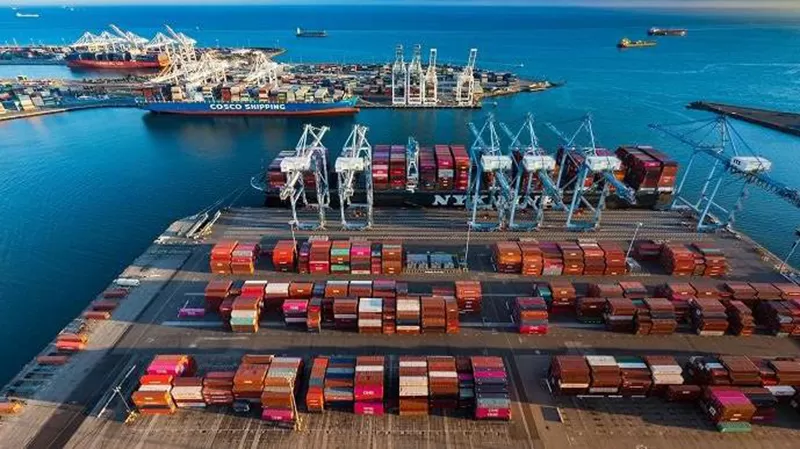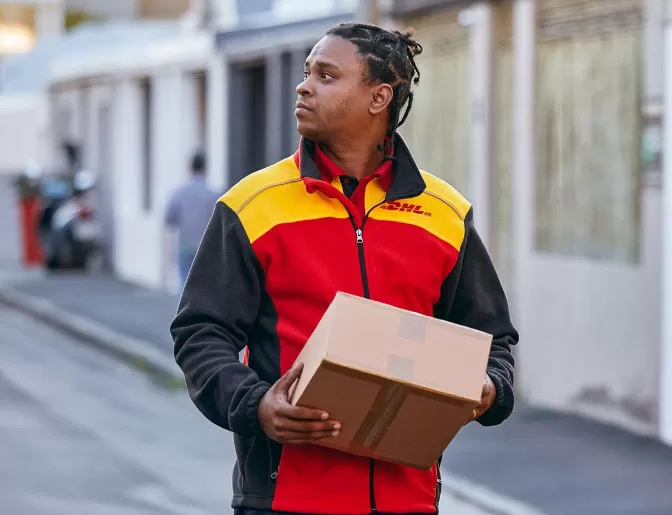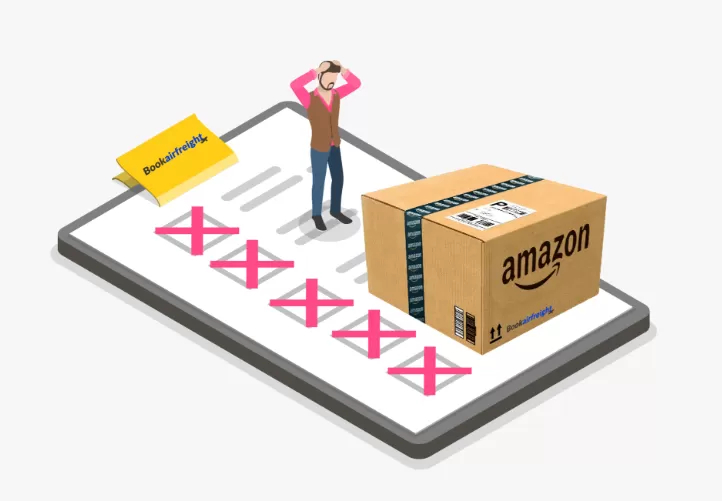Introduction: Why Your Freight Forwarder is Your FBA Business's MVP
Shipping from your factory in China directly to Amazon's fulfillment centers is the lifeblood of your FBA business. Get it right, and you have a seamless, cost-effective supply chain. Get it wrong, and you face crippling delays, unexpected fees, and inventory stockouts.
The single most critical decision you'll make is choosing your freight forwarder. This isn't just a vendor; it's your logistics partner. This ultimate 2025 guide will give you everything you need to make an informed choice, understand the costs and process, and avoid common pitfalls. We'll help you find a partner who doesn't just move boxes but protects your profit margin.
1. Why Your Freight Forwarder is Your Most Important FBA Business Partner
Think of your supply chain as the central nervous system of your Amazon business. A single misfire—a delayed shipment, a customs hold, a rejected pallet—can cause paralysis, leading to stockouts, lost revenue, and damaged rankings. While your supplier creates the product, your freight forwarder is the critical partner that brings it to life for your customers.
Here’s why partnering with a true FBA specialist, not just a general freight mover, is the strategic move that will save you money, time, and endless headaches.
1.1. They're Your "Amazon Whisperer": Mastering Compliance to Avoid Costly Rejections
Amazon's fulfillment centers operate with machine-like precision. A general forwarder might get your container to the right city, but a specialist speaks the language of Amazon compliance fluently. They act as your quality control, ensuring your shipment isn't just delivered, but is accepted.
Labeling Mastery: They ensure every single product has the correct FNSKU label (not the manufacturer's UPC!) and that every outer box has the right shipment ID label in the exact location Amazon specifies.
Pallet Perfection: They know Amazon's rules on pallet type (wood must be ISPM 15 certified), height, weight, and wrapping. Get this wrong, and you face steep rejection fees.
Pre-Service in China: Many offer prep services beforegoods leave China—checking labels, building Amazon-ready pallets, and verifying Shipment IDs. This prevents nasty, expensive surprises at the delivery dock.
1.2. They're Your Operational Quarterback: Managing the Entire Playbook (Door-to-Door DDP)
Shipping internationally involves a complex chain of events across multiple parties. A specialist forwarder is the quarterback who calls the plays and manages every move, turning a multi-headed monster into a simple, streamlined process.
Single Point of Contact: You have one person managing the entire chain: factory pickup, export customs, ocean/air freight, import clearance, duties/taxes (DDP), and final delivery to the Amazon dock. No more juggling emails between ten different companies.
Documentation Dynasty: They prepare and verify the complex web of documents: Commercial Invoice, Packing List, Bill of Lading, and the critical ISF filing for US Customs. An error on any one of these can result in goods being held at port.
Total Landed Cost Clarity: You get one invoice with a predictable, all-in cost. No surprise bills for demurrage or detention months later.
1.3. They're Your CFO for Logistics: Optimizing Your Total Landed Cost
The cheapest freight rate can often be your most expensive mistake. A specialist forwarder looks at your total landed cost and finds strategic ways to save you money.
Mode and Route Optimization: They analyze your product to advise if Air, LCL, or FCL is truly best. They might suggest shipping to a less congested port like Savannah instead of LA/LB to save on ocean freight and drayage.
Slaying Hidden Fees: They understand "free time" at ports. By ensuring swift pickup and delivery, they protect you from hundreds of dollars per day in demurrage (port storage) and detention (container hold) fees that can obliterate your profit margin on a shipment.
Volume Leverage: Their consolidated buying power with carriers often secures you better rates than you could ever get on your own.
1.4. They're Your Risk Management Insurance Policy
Things go wrong. Ships are delayed, storms happen, cargo is mishandled. A specialist forwarder doesn't just move boxes; they manage risk.
Proactive Problem-Solving: They monitor shipments in real-time. If a vessel is delayed, they’re already working on a plan and communicating with you.
Cargo Insurance: They facilitate comprehensive all-risk cargo insurance to protect your inventory's financial value from damage or loss—a non-negotiable for any serious business.
Customs Expertise: Their familiarity with HS codes and regulations drastically reduces the risk of your shipment being held by Customs, which can cause weeks of delays and massive storage fees.
The Bottom Line:
A specialist FBA freight forwarder isn't an expense; they are a strategic partner. Trying to handle it yourself or with a non-specialist is like representing yourself in court. You might save on a fee, but the risk of a catastrophic outcome isn't worth it. They are the key to building a resilient, scalable, and profitable Amazon business.
2. How to Vet and Choose the Right Forwarder: Your Actionable 10-Point Due Diligence Checklist
Choosing a freight forwarder is like hiring a key employee. You need to go beyond the sales pitch and conduct a thorough interview. This checklist is your due diligence framework to find a true partner, not just a vendor.
Checkpoint 1: Probe Their FBA-Specific Experience (The "Have You Done This Before?" Test)
What to Ask: "Walk me through your step-by-step process for a standard FBA LCL or FCL shipment, from my factory receiving the purchase order to the cargo being checked in at Amazon ONT8."
What to Look For: They should mention Amazon-specific terms like Seller Central, shipment IDs, FNSKU labels, pallet build requirements, and appointment scheduling without you prompting them.
Red Flag: Vague answers, confusing the terms "FBA" with general "warehouse delivery," or having to constantly define basic Amazon logistics concepts for them.
Pro Tip: Ask for a case study or a redacted copy of a past "Master Bill of Lading" and "Commercial Invoice" for an FBA shipment. This proves real-world experience.
Checkpoint 2: Map Their Service Scope Against Your Needs (The "One-Stop-Shop" Test)
What to Ask: "Which of these services do you provide in-house vs. outsource? Specifically: customs brokerage on both ends, trucking/drayage in the US, and Amazon prep (labeling, polybagging) in China?"
What to Look For: The more services they control in-house, the more seamless, accountable, and often cost-effective the process will be. A strong partner in China for prep is a huge advantage.
Red Flag: Everything is outsourced. This creates a "pass-the-parcel" situation where no one takes full ownership when problems arise.
Pro Tip: If you sell a variety of products, ask if they have experience with your specific product type (e.g., electronics, textiles, toys with certification requirements).
Checkpoint 3: Demand Total Cost Transparency (The "No Surprises" Test)
What to Ask: "Please provide a detailed, line-item quote for a DDP shipment. I need to see all fees, including THC, B/L fee, ISF filing, customs bond, duty/tax estimate, and drayage to Amazon."
What to Look For: A clear, professional spreadsheet or document that breaks down every cost component into Origin, Ocean/Air, and Destination charges. They should be able to explain each line item.
Red Flag: A single, lump-sum price quote. This is the #1 sign of hidden fees that will appear later. Also, be wary of quotes significantly lower than others—they are cutting corners somewhere.
Pro Tip: Ask about potential peak season surcharges (PSS) and how they are communicated. Are they fixed, or could they change?
Checkpoint 4: Assess Their Communication Technology & Protocol (The "Visibility" Test)
What to Ask: "What is your standard process for providing tracking updates? Do you have an online portal? How will I be notified of exceptions or delays?"
What to Look For: A modern forwarder will have an online dashboard or portal where you can see documents, track your shipment's status (e.g., "Vessel Departed," "Customs Cleared"), and get automatic alerts.
Red Flag: Reliance solely on email updates that you have to chase. If you can't get a clear picture of your shipment's status without calling, it's a bad sign.
Pro Tip: Request the contact information for your dedicated operations manager who will handle your account, not just a general sales email.
Checkpoint 5: Stress-Test Their Problem-Solving Ability (The "When Things Go Wrong" Test)
What to Ask: "Tell me about a time a client's shipment was held by customs or missed its Amazon appointment. What was your process for resolving it?"
What to Look For: A clear, calm explanation of their escalation process. They should take ownership and have relationships with key players (customs brokers, truckers) to solve problems quickly.
Red Flag: Blaming others (the carrier, the port, Amazon) or having no concrete examples. It shows a lack of experience or accountability.
Pro Tip: Ask about their cargo insurance options. A reputable forwarder will strongly recommend it and facilitate the process, not hide it.
Checkpoint 6: Verify Their Financial Stability & Reputation (The "Trust" Test)
What to Ask: "How long have you been in business? Can you provide two references from current clients with a similar shipping profile to mine?"
What to Look For: Check their LICENSE (e.g., FMC license for ocean freight). Look for online reviews on Google, LinkedIn, and industry forums. A stable company is less likely to cut corners or disappear.
Red Flag: Hesitation or refusal to provide references. No online presence or a history of negative reviews about hidden fees or unresponsiveness.
Pro Tip: A quick search on LinkedIn for the company and your sales contact can reveal their tenure and professional history.
Your At-a-Glance Comparison Table
Take your top 2-3 candidates and fill out this table to make a data-driven decision.
| Evaluation Criteria |
Company A |
Company B |
Company C |
| 1. FBA Expertise (1-10) |
|
|
|
| 2. Service Scope (In-house vs. Outsource) |
|
|
|
| 3. Quote Transparency (Detailed?) |
|
|
|
| 4. Tech & Communication (Portal?) |
|
|
|
| 5. Problem-Solving (Case Study) |
|
|
|
| 6. References & Reviews |
|
|
|
| 7. Overall Cost (DDP) |
|
|
|
| 8. "Gut Feeling" / Responsiveness |
|
|
|
Final Advice: The goal is not to find the cheapest option, but the one that offers the most value and reliability. The few extra dollars per unit you might pay for a superior partner are insignificant compared to the cost of a failed or delayed shipment. Use this checklist, trust your due diligence, and choose the partner that demonstrates competence, transparency, and a commitment to your business's success.
3. The Step-by-Step Process: Your Shipment's Journey from Factory to FBA Dock
Understanding the complete process is power. It allows you to manage expectations, communicate effectively with your forwarder, and anticipate potential bottlenecks. Think of your freight forwarder as the conductor of a complex symphony; this is the score they follow to ensure every element arrives in harmony.
Here is the detailed, behind-the-scenes journey of your FBA shipment.
Phase 1: The Prelaunch - Quotation, Booking & Preparation (Before Shipment)
This phase is about meticulous planning. Rushing here causes errors that compound down the line.
Request for Quote (RFQ): You provide your forwarder with detailed information:
Product Details: HS Code, material, value (for customs).
Packaging: Dimensions, weight, and carton count (for volume/weight calculation).
Origin & Destination: Factory address in China and destination Amazon FC code (e.g., SMF3, ONT8).
Shipping Preferences: Desired mode (Air, LCL, FCL) and timeline.
Review & Booking: Your forwarder provides a DDP (Delivered Duty Paid) quote, detailing all costs. Upon approval, you receive a Booking Confirmation and provide the Amazon Shipment ID from your Seller Central shipment plan.
Labeling & Prep Coordination: Your forwarder's team in China coordinates with your factory to ensure all Amazon FNSKU product labels and shipment labels are printed and applied correctly. If using their prep service, goods are sent to their warehouse for inspection, labeling, and packaging.
Phase 2: The First Mile - Origin Handling in China
This is where your physical goods enter the logistics chain.
Factory Pickup: Your forwarder dispatches a local truck to your supplier's factory for pickup. They ensure the cargo is securely loaded and the container VGM (Verified Gross Mass) is recorded if it's an FCL shipment.
Export Customs Clearance: At their warehouse or the port, your forwarder's team prepares and submits all necessary Chinese export documentation. This is typically a straightforward process handled entirely by them.
Carrier Receipt: Your cargo is delivered to the origin port (e.g., Yantian, Shanghai) or airport (e.g., PVG, CAN). The forwarder hands it over to the ocean or air carrier and receives a Bill of Lading (B/L) or Air Waybill (AWB) as proof of receipt. This is a critical milestone.
Phase 3: The Main Voyage - International Transport
Your goods are now on the move across the globe.
Ocean Freight: Your container is loaded onto a vessel. You can track the vessel's position online. Your forwarder monitors for any schedule changes or port congestion.
Typical Transit: Shenzhen to Los Angeles: 14-18 days. Shanghai to New York: 28-35 days.
Air Freight: Your palletized cargo is loaded onto a passenger flight or dedicated cargo freighter.
Typical Transit: China to major US airports: 2-5 days (flight time is only hours; the rest is processing).
Phase 4: The Last Mile - US Customs, Clearance & Delivery
This is the most complex phase, where your forwarder's US expertise is paramount.
Arrival & Unloading: The ship arrives at the US port (e.g., LA/LB, NY/NJ) or the plane lands at the airport (e.g., LAX, ORD). The cargo is unloaded and moved to a holding area or container yard.
US Customs Clearance: This is the most critical step. Your forwarder's US customs broker (often an in-house partner) has already filed the necessary documents (ISF, Customs Entry). They now work with CBP to clear the goods. Proper HS codes and product values are essential to avoid inspections. *An inspection can add 3-10+ days of delay.*
Drayage (Final Trucking): Once cleared, your forwarder dispatches a licensed drayage carrier to pick up the container from the port or the cargo from the airport. The trucker must schedule an appointment with Amazon for delivery. During peak season, appointment slots can be scarce, adding delays.
Delivery to Amazon FBA:
The truck arrives at the Amazon fulfillment center at its precise appointment time.
Amazon staff unload the pallets or cartons.
They scan the shipment labels, and the status in your Seller Central changes to "Checked in."
Note: "Checked in" does not mean "available for sale." It can take 1-5+ days for Amazon to fully receive and stow your inventory, after which it becomes active in the marketplace.
Visual Timeline: What to Expect
| Phase |
Key Milestone |
Who is Responsible? |
Estimated Duration |
| Prelaunch |
Booking Confirmed, Labels Applied |
You & Forwarder |
3-7 days |
| Origin |
Cargo Picked Up from Factory |
Forwarder |
1-2 days |
| Origin |
Cargo Loaded on Vessel/Plane (B/L Issued) |
Forwarder / Carrier |
2-4 days |
| Transport |
Ocean: Vessel Departure → Arrival
Air: Flight Departure → Arrival |
Carrier |
Ocean: 15-35 days
Air: 2-5 days |
| Destination |
US Customs Cleared |
Forwarder's Broker |
1-3 days (if no issues) |
| Destination |
Appointment Scheduled & Cargo Delivered to Amazon |
Forwarder's Trucker |
2-5 days |
| Destination |
Amazon Receives & Stocks Inventory |
Amazon |
1-5 days |
| TOTAL |
From Factory Pickup to Sellable Inventory |
|
Ocean: 30 - 50+ days
Air: 8 - 15+ days |
Pro Tip: Your freight forwarder's job is to manage this entire timeline and keep you informed at every stage. A great partner will provide proactive updates, especially if any delays occur, giving you peace of mind throughout the journey.
4. Cost Breakdown: Demystifying Your DDP Shipment - From Hidden Fees to Value
Understanding the true, total landed cost is the single greatest advantage you can have as an importer. A cheap ocean freight rate can hide a multitude of sins that will explode your budget. This section breaks down every potential cost component, explains what it is, why it matters, and how to avoid overpaying.
Think of your total cost in three layers: Core Transportation, Government & Terminal Fees, and Value-Added Services.
Layer 1: The Core Transportation Costs
These are the most variable and significant costs, directly tied to your cargo volume and the market.
| Cost Component |
What It Is & Why It Matters |
2025 Typical Range |
Pro Tips & Watchouts |
| Ocean Freight (FCL) |
The base cost to rent a full 20ft or 40ft container on a ship. Quoted as a flat rate. Highly volatile based on fuel costs, demand, and geopolitics. |
40'HQ: $3,200 - $6,000+
20'GP: $2,000 - $3,500+ |
* 40'HQ is almost always more cost-effective than a 20'GP for volume.
* Rates can double during peak season (Q4).
* Confirm if your quote includes Bunker Adjustment Factor (BAF), a fuel surcharge. |
| Ocean Freight (LCL) |
You pay for the volume (CBM) your cargo occupies within a shared container. |
$120 - $200 / CBM |
* Calculate the cost difference vs. FCL. Sometimes, with a 15-16 CBM shipment, paying for a full 20' container is cheaper and faster than LCL.
* Watch for minimum charges (e.g., 1 CBM minimum). |
| Air Freight |
The cost per kilogram to ship your goods via air. Extremely sensitive to global events and capacity. |
$4.00 - $8.50 / kg |
* Know the chargeable weight rule: carriers charge by volumetric weight (LxWxH/6000) or actual weight, whichever is higher.
* Consolidating multiple shipments can help you reach a better weight tier. |
Layer 2: The Fixed & Variable Fees (The "Hidden" Costs)
This is where inexperienced importers get burned. These are often mandatory fees.
| Cost Component |
What It Is & Why It Matters |
2025 Typical Range |
Pro Tips & Watchouts |
| Origin Charges |
Fees for handling your cargo in China. Includes trucking to port, documentation, export customs declaration, and port terminal fees. |
$250 - $600 |
* This should be a all-in origin fee. Beware of forwarders who list these items separately to make the ocean freight look cheaper. |
| Destination Charges |
The US equivalent of origin charges. Includes port handling fees, Pier Pass (for LA/LB), and customs processing fees. |
$400 - $900 |
* A legitimate forwarder will include this in their DDP quote. Ask for a breakdown to understand what you're paying for. |
| Customs Clearance & Bond |
Fee for a licensed broker to file your entry with US Customs. A Customs Bond is a mandatory insurance policy guaranteeing duty payment. |
Clearance: $100 - $250
Bond: $250 - $500/yr |
* You need a continuous bond if you import regularly. A forwarder can arrange a single-entry bond for one-off shipments. |
| Duties & Taxes |
The actual taxes levied by the US government based on your product's HS Code and value. Paid to customs. |
Varies by product (0% - 30%+) |
* This is NOT your forwarder's fee. They pay it on your behalf. The cost is a direct pass-through. Accurate HS codes are critical to avoid underpayment penalties. |
| Drayage (Trucking) |
The final truck ride from the US port/airport to your Amazon FC. Cost depends heavily on distance and fuel. |
$300 - $1,200 |
* LA to ONT8: ~$300
* NJ to MDW2 (Chicago): ~$1,000+
* Peak Season Alert: Driver shortages and appointment delays can cause rates to spike. |
Layer 3: The Value-Add & Insurance Services
These are often optional but critically important for protecting your investment and ensuring compliance.
| Cost Component |
What It Is & Why It Matters |
2025 Typical Range |
Pro Tips & Watchouts |
| Amazon Prep Services |
The labor and materials cost for making your goods Amazon-ready. This is a huge value-add if done in China. |
$0.80 - $3.50 / unit |
* Labeling: $0.50-$1.00/unit
* Polybagging: $0.30-$0.60/unit
* Bubble Wrap: $1.50-$3.50/unit
* Doing this in China is often 50% cheaper than paying Amazon's correction fees. |
| Cargo Insurance |
Highly Recommended. Protects the financial value of your goods against physical loss or damage during transit. |
0.3% - 0.8% of cargo value |
* This is a small price for immense peace of mind. A total loss of an uninsured container could bankrupt a small business.
* Confirm what the policy covers (e.g., "All Risk" vs. named perils). |
| ISF Filing Fee |
A mandatory US Customs filing required 24 hours before cargo is loaded in China. Your forwarder does this. |
$50 - $100 |
* Failure to file or inaccurate filing results in $5,000+ fines. Ensure your forwarder includes this. |
Putting It All Together: Real-World Cost Scenarios
Scenario 1: FCL Shipment (40'HQ) - $20,000 worth of Furniture
Ocean Freight: $4,500
Origin + Destination Fees: $800
Customs & Bond: $350
Duties (6.5%): $1,300
Drayage (LA to ONT8): $350
Cargo Insurance (0.4%): $80
Total Estimated Landed Cost (DDP): ~$7,380 + Duties ($1,300) = $8,680
Cost as % of Goods: ~43%
Scenario 2: LCL Shipment (5 CBM) - $8,000 worth of Electronics
Ocean Freight (5 CBM @ $150): $750
Origin + Destination Fees: $500
Customs & Bond: $350
Duties (3.9%): $312
Drayage (NJ to MDW2): $950
Cargo Insurance (0.5%): $40
Total Estimated Landed Cost (DDP): ~$2,590 + Duties ($312) = $2,902
Cost as % of Goods: ~36%
The Ultimate Takeaway: Always, always request a detailed, line-item DDP quote. A professional forwarder will provide this transparency. Use these estimates to audit their quote and ask informed questions. The goal is to understand the total cost, not just chase the lowest ocean freight rate.
6. Top Risks and How Your Forwarder is Your Strategic Shield
In global logistics, things will go wrong. The difference between a minor hiccup and a catastrophic business disruption often comes down to one thing: your choice of freight forwarder. A specialist doesn't just move boxes; they anticipate, mitigate, and manage risk at every turn. Here’s a detailed breakdown of the top threats to your supply chain and how the right partner acts as your first line of defense.
Risk 1: Amazon Compliance Rejection & Strikes
The Nightmare: Your shipment arrives at Amazon, only to be rejected or sent to the "returns" department. Reasons include wrong labels, incorrect pallet sizes, improper packaging, or mismatched quantities. Amazon will charge you steep re-labeling fees (often $40+ per box) and your inventory is stuck in limbo, leading to stockouts and lost sales.
How a Specialist Forwarder Mitigates It:
Pre-Shipment Audit: They conduct inspections at their China warehouse to verify FNSKU labels, polybag suffocation warnings, box weight, and expiration dates before the goods leave the country.
In-House Prep Services: They offer labeling, bundling, and polybagging services at the origin, which is significantly cheaper than paying Amazon's correction fees. This is their core expertise.
Shipment Plan Reconciliation: They meticulously check your Amazon-generated shipment plan against the actual cartons being shipped to prevent receiving discrepancies.
Risk 2: Customs Delays, Holds, and Examinations
The Nightmare: Your shipment is held by Customs and Border Protection (CBP). This can add 5-20 days of delay, during which you accrue massive storage fees (demurrage) at the port and risk missing your sales season. The worst-case scenario is a full examination, where CBP physically unpacks your goods, potentially causing damage and incurring fees of $2,000 - $5,000+.
How a Specialist Forwarder Mitigates It:
Expert Classification: They ensure your products have the correct HS Tariff Codes, which dictate duty rates and admissibility. Misclassification is a primary cause of holds.
Accurate Documentation: Their team audits the Commercial Invoice and Packing List for consistency and correctness, ensuring the declared value matches the proforma invoice.
Strong Brokerage Network: They use licensed US customs brokers (often in-house) with established relationships with CBP to quickly resolve issues. If a hold occurs, they are on the phone immediately to resolve it.
ISF Timely Filing: They guarantee the Importer Security Filing is submitted accurately and 24 hours before loading, avoiding automatic $5,000 fines.
Risk 3: Crippling Demurrage and Detention Fees
The Nightmare: Containers are not free. After a limited "free time" (often 4-7 days), the ocean carrier and port start charging daily fees. Demurrage (port storage) and detention (container hold) fees can skyrocket to $100 - $500 per day, completely erasing your profit margin on a shipment.
How a Specialist Forwarder Mitigates It:
Proactive Monitoring: They track vessel arrivals and have systems in place to initiate the pickup process the moment the container is available.
Strong Drayage Relationships: They work with reliable trucking companies that can secure appointments quickly, even during congested periods.
Expert Knowledge: They understand the complex web of free time rules at different US ports and terminals and plan the entire logistics chain to minimize time at port.
Risk 4: Cargo Loss or Damage
The Nightmare: A container is dropped overboard, a pallet is crushed in transit, or goods are stolen from an unsecured trailer. You face a total or partial financial loss of your inventory with no recourse.
How a Specialist Forwarder Mitigates It:
Insurance Facilitation: They strongly advocate for and facilitate comprehensive "All-Risk" marine cargo insurance, typically costing only 0.3%-0.8% of the cargo value. They handle the claims process on your behalf if an incident occurs.
Vetted Carrier Network: They only work with reputable ocean and air carriers with strong safety records.
Proper Packing Guidance: They advise on optimal packing and palletizing methods to withstand the rigors of international transport.
Risk 5: Peak Season Chaos & Capacity Crunches
The Nightmare: During Q4 (Oct-Dec), freight rates spike, vessels become overbooked, ports congest, and trucking capacity vanishes. Your shipment gets "rolled" (bumped to a later vessel) and sits for weeks, missing Black Friday and Cyber Monday.
How a Specialist Forwarder Mitigates It:
Space Allocation: Established forwarders have pre-negotiated space allocations (guaranteed volume) with carriers, giving them priority over smaller shippers.
Market Intelligence: They provide early warnings about peak season surcharges (PSS) and congestion, allowing you to plan and budget accordingly.
Contingency Planning: They have relationships with multiple carriers and truckers, allowing them to pivot quickly if one route becomes impassable.
Risk 6: Communication Blackouts & Lack of Visibility
The Nightmare: You have no idea where your shipment is or what's happening. Emails go unanswered, and your cargo is in a "black hole." This lack of control is incredibly stressful and prevents you from making informed business decisions.
How a Specialist Forwarder Mitigates It:
Dedicated Operations Manager: You get a single point of contact who knows your shipment intimately.
Real-Time Tracking: They provide access to a online portal for 24/7 tracking, showing milestones like "Vessel Departure," "Customs Hold," or "Out for Delivery."
Proactive Updates: They don't wait for you to ask. A good forwarder communicates delays or issues immediately, along with a proposed solution.
Your Risk Mitigation Checklist
Use this table to evaluate how a potential forwarder will protect you.
| Risk |
Question to Ask Your Potential Forwarder |
What a Great Answer Sounds Like |
| Amazon Rejection |
"What is your process to ensure my shipment is 100% Amazon compliant?" |
"We perform a pre-shipment audit at our China warehouse and offer full prep services. We guarantee compliance or we cover the rework fees." |
| Customs Holds |
"What is your procedure if my shipment is held by Customs?" |
"Our in-house US brokerage team is notified immediately. We diagnose the issue and work directly with CBP to resolve it, providing daily updates." |
| Port Fees |
"How do you monitor and minimize demurrage and detention risk?" |
"We track free time daily and have dedicated drayage partners who prioritize our containers. We've averaged under $100 in fees per container this year." |
| Cargo Damage |
"Can you help me arrange all-risk cargo insurance?" |
"Absolutely. We strongly recommend it. We work with Lloyd's of London underwriters and can bind coverage for you today. The cost is 0.4% of value." |
| Peak Season |
"How do you guarantee space for me during Q4?" |
"We secure annual space allocations with major carriers. We require bookings 6-8 weeks in advance for Q4 and will provide a locked-in rate." |
| Communication |
"What is your standard protocol for providing updates?" |
"You'll have a dedicated ops manager and a link to our tracking portal. We update at every key milestone and proactively alert you to any exceptions." |
The Bottom Line: The cheapest freight rate often comes with the highest risk. Investing in a specialist freight forwarder is essentially purchasing a comprehensive insurance policy for your entire supply chain, your cash flow, and your peace of mind.
7. Real-World Case Study: How "TechGadget Inc." Mastered FBA Shipping from China
Let's move from theory to practice. This case study follows a real SME (name and specifics changed for privacy) to show you exactly how the right freight forwarder partnership transforms logistics from a headache into a competitive advantage.
Company: TechGadget Inc.
Product: Bluetooth speakers and accessories.
Volume: Mid-sized Amazon FBA Seller, 3-4 container shipments per year, plus regular restocks.
Challenge: Like many sellers, TechGadget faced a classic dilemma:
Sea Freight was affordable but slow, causing frequent stockouts on fast-moving products.
Air Freight was fast but expensive, eroding profit margins on every shipment.
They lacked the expertise to navigate complex customs rules and Amazon's compliance requirements, leading to two costly rejected shipments in one year.
The Turning Point: Implementing a Hybrid Logistics Strategy
TechGadget partnered with a forwarder who acted as a strategic consultant, not just a mover. Together, they implemented a data-driven, hybrid shipping model.
The Strategy:
Baseline Inventory via FCL (Sea Freight):
What: Their main inventory batches were shipped via 40' HQ containers from Shenzhen (Yantian) to Long Beach.
Why: This provided the lowest cost per unit, establishing their core inventory for the quarter.
Forwarder's Role: Handled everything from factory pickup, export customs, to negotiating a strong ocean freight rate. They provided a precise timeline for planning.
Aggressive Restocks via Consolidated LCL (Sea) & Air:
What: Instead of expensive full pallet air freight, the forwarder consolidated TechGadget's urgent restock orders with other clients' shipments.
Why: This created a "rolling warehouse" effect. TechGadget could send smaller quantities more frequently.
Method A (LCL for semi-urgent): For restocks needed in 4-5 weeks, they used LCL sea freight. It was 60% cheaper than air and faster than waiting for their next FCL container.
Method B (Air for critical): For emergency restocks needed in 10 days, they used consolidated air freight. By sharing space, they cut air costs by ~35% compared to direct air.
In-China Prep for 100% Compliance:
What: All labeling and polybagging were done at the forwarder's warehouse in Shenzhen before shipment.
Why: This eliminated the risk of Amazon rejection fees and delays. It was a fixed, predictable cost.
The Results: By the Numbers (12-Month Period)
| Metric |
Before New Strategy |
After New Strategy |
Change |
| Average Stockout Rate |
15% (Peak: 30%) |
< 3% |
-80% |
| Logistics Cost (% of COGS) |
~19% |
~14% |
-26% |
| Amazon Rejection Fees |
$2,800 (yearly) |
$0 |
$2,800 Saved |
| Inventory Turnover |
6 times/year |
10 times/year |
+67% |
| Primary Shipping Method |
Erratic, panic-driven air freight |
Planned FCL + strategic LCL/Air |
Predictable & Calm |
The "So What?": The reduction in stockouts alone protected an estimated $85,000 in potential lost sales during the holiday quarter. The savings on logistics and fees dropped directly to their bottom line.
Key Takeaways You Can Apply to Your Business
TechGadget's story isn't unique. It highlights actionable strategies any importer can use:
Embrace a Hybrid Shipping Model. You don't have to choose only sea or only air. Use FCL for cost-effective base inventory and LCL/air for agile, responsive restocking. This is the most powerful way to balance cost and speed.
Consolidation is Your Secret Weapon. Consolidated air and LCL shipments are the most underutilized cost-saving tools for SMEs. It allows you to access better rates typically reserved for huge volume shippers.
Pay for Prep at the Origin. The one-time cost of prep in China is far cheaper than the variable, unpredictable, and steep fees Amazon will charge you for non-compliance. Consider it mandatory insurance.
Your Forwarder Should Be a Data Partner. TechGadget's forwarder didn't just execute orders; they provided the data and analysis needed to build a smarter shipping strategy. Demand this level of insight.
Plan Around Your Sales Velocity. Categorize your products (A, B, C items based on sales speed) and build your shipping strategy around each category. Fast-moving "A" items might need a different approach than slow-moving "C" items.
Final Thought: TechGadget's success wasn't about finding the cheapest freight rate. It was about finding the most knowledgeable partner who helped them build a smarter system. This shift in mindset—from viewing logistics as a cost center to a strategic lever—is what will set your business apart.
Conclusion: Your Next Step
Choosing a freight forwarder is a strategic investment in your Amazon business's stability and growth. By focusing on expertise, transparency, and process over just the lowest price, you build a supply chain you can rely on.
You now have the knowledge to make an informed choice. Your next step is to act.
Ready to Get Quotes? The market changes daily. Contact us today to get connected with vetted, specialist FBA freight forwarders and receive personalized, competitive quotes for your specific shipment needs.

 EN
EN
 FR
FR
 ES
ES
 JA
JA
 PT
PT
 RU
RU
 AR
AR
